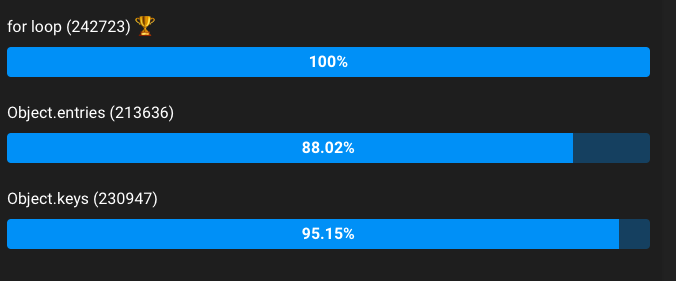Welcome to series Made easy with JavaScript. In this series we will be exploring some quick and efficient methods to do day to day operations in JavaScript. This post will explore on the most used operations/actions. Let’s get started.
You can read Part 1 of this series Made easy with JavaScript Arrays at https://akrp.in
Checking for a key exists in object
Checking for an key in object by value by validating it with undefined, but is not an accurate way of testing whether a key exists because undefined itself can be a value of an key.
const obj = { key: undefined };
if(obj["key"] !== undefined) {
// key exists
}So, we can use in operator to check for an key.
if("key" in obj){
// key exists
}We can also check if a key doesn’t exist using negate condition with a parenthesis.
!("key" in obj) // key does not exist
!"key" in obj // ERROR! Equivalent to "false in obj"If we want to particularly check for properties of the object instance (and not inherited properties), we can use hasOwnProperty
obj.hasOwnProperty("key") // key existsIn terms of performance, in offers better performance that hasOwnProperty.

Iterating through all keys in an object
We can use various methods to iterate through an object in JavaScript, but the most easiest and high performing approach is using a plain for loop or Object.keys method.
// for loop
const myObject = {
"key1": "value",
"key2": "value"
};
for (let key in myObject) {
console.log(key);
console.log(myObject[key]);
}
// Object.entries
Object.entries(myObject).forEach(([key, val]) => {
console.log(key);
console.log(val);
});
// Object.keys
Object.keys(myObject).forEach(key => {
console.log(key);
console.log(myObject[key]);
});Plain for loop and Object.keys is providing better performance that using Object.entries.

Merging two objects
We can able to merge two JavaScript objects using different methods like using Object.assign or even a plain for loop.
Object.assign provides better performance than a traditional for loop.
// using for loop
const obj1 = { "location": "delhi", "country": "us" };
const obj2 = { "pet": "dog" };
const merge = (obj1,obj2) => {
let obj3 = {};
for (let key in obj1) { obj3[key] = obj1[key]; }
for (ley key in obj2) { obj3[key] = obj2[key]; }
return obj3;
}
console.log(merge(obj1,obj2));
// using object.assign
console.log(Object.assign(obj1, obj2));
Checking if the Object is empty
We can check if the object is empty by using a traditional for loop or checking the length of object using Object.keys method and as you expect both provides a similar performance.
// Object.keys
var obj = {};
console.log(Object.keys(obj).length === 0 && obj.constructor === Object);
// for loop
var obj = {};
const isEmpty = (obj) => {
for(let key in obj) {
if(obj.hasOwnProperty(key))
return false;
}
return true;
}
console.log(isEmpty(obj));
Deep cloning an Object
Most widely used method for this is by using the combination if JSON.parse and JSON.stringify, we can also we Object.assign to deep clone the object.
Using JSON.parse and JSON.stringify is affecting the performance in big time, so its better to use Object.assign whenever possible to get a better performance.
// JSON.parse and JSON.strigify
const myObj = {
string: 'string',
number: 123,
bool: false
}
console.log(myObj);
const clonedObj = JSON.parse(JSON.stringify(myObj));
console.log(clonedObj);
// Object.assign
const newClonedObj = Obj.assign({},myObj);
console.log(newClonedObj);
That’s marks the conculsion for this part of the series - Made Easy with JavaScript. Thanks for reading and will see you soon with the Part 3 on Strings.